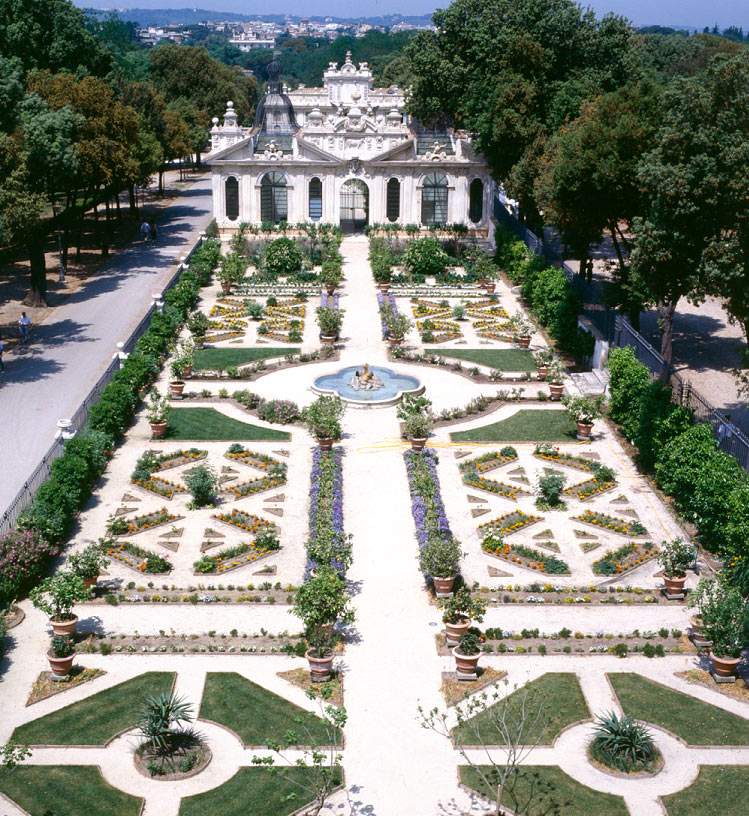The Borghese Gallery opens the Secret Gardens for FAI Days. But why was it necessary to wait for FAI?
The Secret Gardens of the Borghese Gallery in Rome, one of the autonomous state museums created under the Franceschini reform, will be opened to the public. The two gardens (the Giardino dell’Uccelliera and the Giardino della Meridiana) are an integral part of the complex built in the seventeenth century by Scipione Borghese: in the Rome of the time, the museum explains, high-ranking gardens included within them one or more flower gardens, not very large enclosed spaces close to the main buildings, specializing in flowers, particularly bulbaceous plants, and exotic plants. These gardens were direct descendants of the medieval garden from a structural point of view but continued the idea of the sixteenth-century botanical garden by replacing the didactic character with that of ornamental and social display (the numerous flowering plants had in fact been increasing during the second half of the sixteenth century, transforming the seventeenth century into the so-called “flower century”). The space within the seventeenth-century flower garden was divided into compartments bounded by a verge according to an ornamental geometric design. Although with numerous alterations over the centuries, they have remained almost unchanged in size, location and spatial function within the Park.
The Giardino dell’Uccelliera, which precedes the Casino dell’Uccelliera, is one of the main examples of early 17th-century flower gardens in Rome and is divided into small compartments called “aiette” or “cassette” (to facilitate close observation) bordered by “terracotta ”pianelle" that contain anemones, the most important flower in the Roman area at the time, as well as plantations of exotic bulbous plants such as daffodils, hyacinths, crocuses, ornithogals and, to a lesser extent, tulips represented by the first species known then in Europe.
Continuing on, one comes to the Garden of the Sundial, which is bordered at its western end by the Casino of the same name and enclosed by an exedra wall: it became famous for the presence of a “flower theater” consisting of a double stepped structure for the display of pots of exotic flowers, which could be observed from the central path. The bloom was apparently covered by curtains to shade plants and people just as in ancient theaters. This is another important space, both in terms of structure (the central element of this garden is in fact the design of the star, a wind rose, which is ideally associated with the sundial painted on the facade of the Casino dell’Uccelliera according to the fashion of sundials placed in the second half of the seventeenth century in churches, villas and gardens) and in terms of theornamental planting, a significant example of the horticultural taste of the mid-seventeenth century (flowering bulboses with tulips, oriental hyacinths, Asian buttercups, as well as anemones; herbaceous perennials and annuals; herbaceous and succulent plants of South African origin; the bright red flowers of the Lobelia cardinalis introduced at the time and which became the symbolic plant of Cardinal Barberini).
These spaces, although perfectly integrated into the complex, are normally closed (they are opened only in case of temporary events) and will open only this weekend, June 27 and 28, on the occasion of the “FAI Days Outdoors,” the two-day event that the Italian Environmental Fund has devised to replace the traditional “FAI Spring Days” that could not be held this year due to Covid. To enter, it will be necessary to make a mandatory reservation at www.giornatefai.it (reservations open from 12 p.m. on June 23 to 3 p.m. on June 26), while places last, with the obligation to pay the FAI contribution (€3 for members, €5 for non-members), which, the organization informs, will be used to raise funds dedicated to FAI’s activities of recovery, maintenance of property throughout Italy, promotion and care of the territory. One does not enter through the normal museum entrance, but through the gate of the Gardens on the Piazzale Scipione Borghese side.
It will certainly be an interesting and rewarding experience because of the chance to see what is normally closed, but what many people must be wondering now is: why was it necessary to wait for a FAI event to open an autonomous state museum space?
 |
| The Borghese Gallery opens the Secret Gardens for FAI Days. But why was it necessary to wait for FAI? |
Warning: the translation into English of the original Italian article was created using automatic tools. We undertake to review all articles, but we do not guarantee the total absence of inaccuracies in the translation due to the program. You can find the original by clicking on the ITA button. If you find any mistake,please contact us.





























